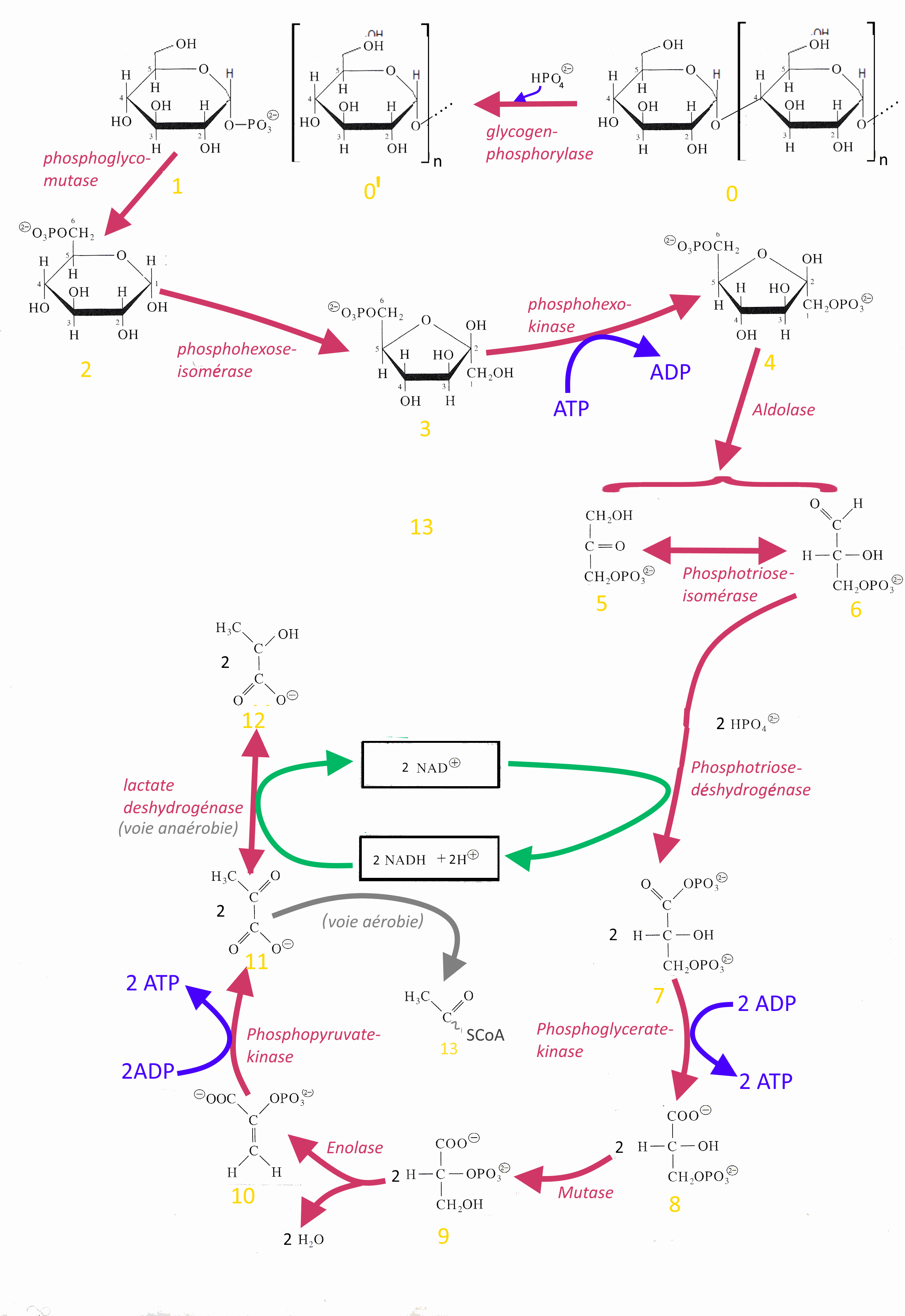







Glycogenolysis occurs in muscle and liver tissue cells in response to hormonal and neural signals. It provides energy (ATP !) And plays an important role in regulating glucose levels in the blood. Under anaerobic conditions it produces lactic acid (cramps!), otherwise AcetylCoA which is metabolized in the Krebs cycle.

0 Glycogen (n + 1) glucose units 0 Glucose (n) Glucose Units 1 Glucose-1-phosphate 2 Glucose-6-phosphate 3 Fructose-6-phosphate 4 Fructose-1,6-diphosphate 5 Dihydroxyacetonephosphate 6 Glyceraldehyde-3-phophate 7 1,3-Diphosphoglycerate 8 3-Phosphoglycerate 9 2-Phosphoglycerate 10 Phosphoenolpyruvate 11 Pyruvate 12 Lactate 13 Acetylcoenzyme A (enters the Krebs cycle)
For details on the role of ATP look at → here For details on the role of NAD + look at → here For the Krebs cycle look at → here